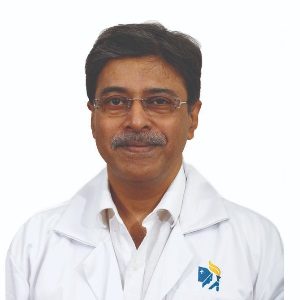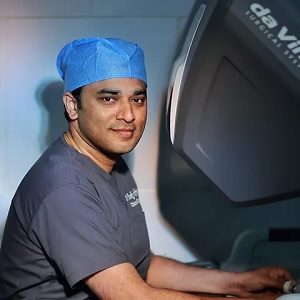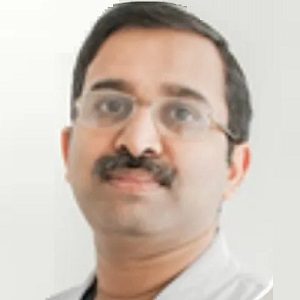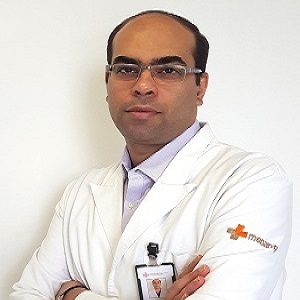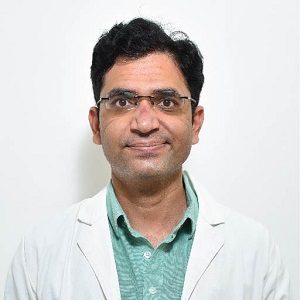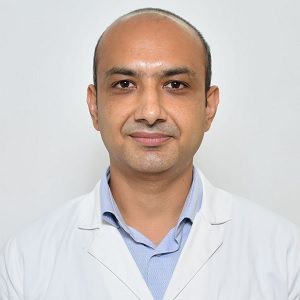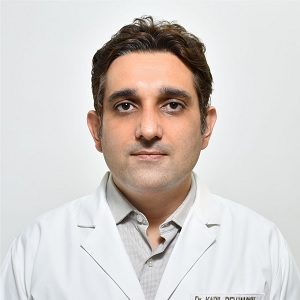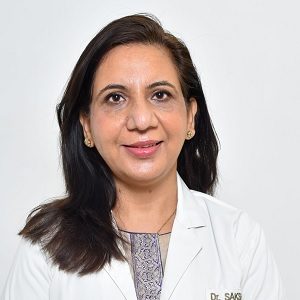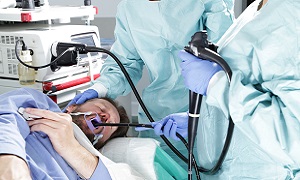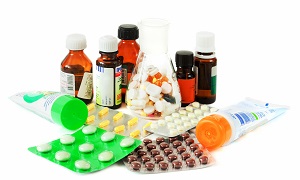Best Doctors in India for Achalasia Treatment
- Liver Transplant Surgeon and HPB Surgeon, Chennai, India
- Over 15 years’ experience
Profile Highlights:
- Dr. Selvakumar Naganathan is one of the best liver transplant surgeons in India with nearly 15 years of experience.
- He has carried out more than 2000 procedures, including 300 donor & 500 recipient hepatectomies, cadaver transplantations, retrieval of cadaver livers, and live donor liver transplants.
- He also established many liver transplantation centers across India & other countries.
- General Surgeon and Surgical Gastroenterologist, Chennai, India
- Over 27 years’ experience
Profile Highlights:
- Dr. Raghunath K J is a well-known name in the field of general surgery with an experience of more than 27 years.
- He went under training in advanced Laparoscopic surgery from Canada and France.
- Dr. Raghunath pioneers many prestigious projects in the UK.
- Dr. Raghunath has a specialized interest in Gall Bladder Stone treatment, Hernia, GI Cancer Surgery, Laparoscopic Sleeve Resection, Endoscopic Surgery, etc.
- Colorectal Surgeon and Robotic Surgeon, Chennai, India
- Over 26 years’ experience
Profile Highlights:
- Dr. Venkatesh Munikrishnan is one of the best Gastroenterologists and Colorectal Surgeons in Chennai, having 21 years of experience in managing disorders that need surgical treatment.
- Dr. Munikrishnan specializes in surgical oncology, endoscopy, Gastritis Treatment, etc.
- He is also active in research; one of his research on CT Colonography fetched a grant from Bracco, Milan, Italy.
- GI Surgeon and Liver Transplant Surgeon, Gurugram, India
- Over 20 years’ experience
Profile Highlights:
- Dr. Amit Nath Rastogi is a pioneer in the field of liver transplant surgery. He completed his fellowship in liver transplant surgery at Sir Gangaram hospital while being a part of the largest liver transplant program in the country.
- Furthermore, he received his training in robotic liver surgery from IRCAD -Strasbourg, France, and advanced robotic HPB training from Grosseto.
- Liver Transplant Surgeon, Gurugram, India
- Over 10 years’ experience
Profile Highlights:
- Dr. Prashant Vilas Bhangui is one of the highly trained liver transplant specialists who received his training in Surgical Gastroenterology and Liver Transplantation.
- He also holds a European Inter-University Diploma in Hepato-Biliary-Pancreatic Cancers.
- Dr. Prashant is further interested to work in certain fields which include hepatocellular carcinoma, colorectal liver metastases, and living donor liver transplantation. Besides this, he has also published several journals on these subjects.
- Gastroenterologist, Gurugram, India
- Over 7 years’ experience
Profile Highlights:
- Dr. Abhinandan Mishra is one of the young Gastroenterology doctors in Gurugram who is particularly interested in inflammatory bowel disease treatment.
- Dr. Abhinandan Mishra offers Endoscopic Retrograde Cholangiopancreatography, Ascites tap, Endoscopy, Peroral Endoscopic Myotomy, Capsule Endoscopy, Esophageal Manometry, Magnetic Resonance Cholangiopancreatography, etc.
- Gastroenterologist, Gurugram, India
- Over 18 years’ experience
Profile Highlights:
- Dr. Atul Sharma is a renowned Gastroenterology practitioner in Gurugram and is particularly interested in Third Space Endoscopy and Per Oral Endoscopic Myotomy (POEM).
- He presented several papers on Manometry, Luminal gastroenterology, and interventional Gastroenterology during training in Advanced Interventional GI Endoscopy.
- Gastroenterologist, Gurugram, India
- Over 15 years’ experience
Profile Highlights:
- Dr. Kapil Jamwal is a renowned GI practitioner in Gurugram with an extensive experience in digestive and liver disease.
- The specialist offers treatment for Hepatitis B, Jaundice, Hepatitis C, Inflammatory Bowel Syndrome, Acute Pancreatitis, Liver Diseases, and Irritable Bowel Syndrome.
- Gastroenterologist, Gurugram, India
- Over 18 years’ experience
Profile Highlights:
- Dr. Rajesh Padhan is a renowned Gastroenterologist in Gurugram with an extensive experience of more than 18 years in the field.
- He is skilled in carrying out various endoscopy procedures such as Colonoscopy, Endoscopic retrograde cholangiopancreatography, Endoscopic ultrasound, upper GI endoscopy, etc.
- Gastroenterologist, Hepatologist, Gurugram, India
- Over 25 years’ experience
Profile Highlights:
- Dr. Sakshi Karkra is one of the best Pediatric gastroenterologists in Gurugram.
- She has special interest/ expertise in Colonoscopy, Upper GI Endoscopy, Capsule endoscopy, Enteroscopy, Endoscopic variceal ligation, Foreign body removal, Stricture & achalasia dilatation, Polypectomy, Anal manometry, Liver Biopsy, and Colonic manometry.
Best Hospitals in India for Achalasia Treatment
ACHALASIA
Achalasia is a rare condition of the muscle of the esophagus or swallowing tube. It occurs when the nerves in the esophagus suffer damage. The term achalasia itself means ‘failure to relax’ and it refers to the inability of the lower esophageal sphincter to open and pass food into the stomach. Due to this, people suffering from this condition have difficulty swallowing food.
Unfortunately, there is no permanent cure for achalasia, since once the esophagus is paralyzed, the muscle is unable to work properly again. However, symptoms can be managed by treatments.
Symptoms
The symptoms of achalasia include:
- Difficulty in swallowing food
- Regurgitation of food that is retained in the esophagus. If this happens at night, food may be aspirated into the lungs, which is a serious medical problem
- Loss of weight caused by reduced intake of food
- Chest discomfort caused by esophageal dilation and/or retained food
- Sharp chest pain where usually the cause is unclear
- Heartburn
Causes
What exactly causes achalasia is still not properly understood. However, according to scientists, it may be caused by a loss of nerve cells in the esophagus. There are several theories about what causes this, and it is suspected that autoimmune responses or a viral infection may lead to the condition. Although it is rare, achalasia might be caused by a genetic disorder or infection as well.
Diagnosis
Sometimes, achalasia can be overlooked or misdiagnosed due to its symptoms similar to other digestive disorders, since it has symptoms that are similar to other digestive disorders. The following are likely to be recommended by your doctor:
Esophageal manometry
This test helps to measure the rhythmic muscle contractions in your esophagus when you swallow, as well as the coordination and force exerted by the esophagus muscles. It also measures how well your lower esophageal sphincter relaxes or opens while you are swallowing. This test helps to determine the type of motility problem you might have.
X-rays of your upper digestive system (esophagram)
First, you drink a chalky liquid that coats and fills the inside lining of your digestive tract, after which an X-ray will be taken. This coating helps your doctor see a silhouette of your esophagus, stomach as well as the upper intestine. You might need to swallow a barium pill that can help to show a blockage of the esophagus.
Upper endoscopy
In this method, your doctor will insert a thin, flexible tube equipped with a light and camera (endoscope) down your throat, to examine the inside of your esophagus and stomach. Endoscopy helps to define a partial blockage of the esophagus if your symptoms or results of a barium study indicate that possibility. Endoscopy can also be used in order to collect a sample of tissue to be tested for complications.
Specific treatment depends on your age, health condition, and the severity of the achalasia.
Treatment
The goal of the treatment is to relax or stretch the lower esophageal sphincter so that the food and liquid are able to move easily through your digestive tract.
Nonsurgical treatments
Nonsurgical treatment options include the following:
Pneumatic dilation
In this method, a balloon is inserted by endoscopy into the center of the esophageal sphincter and inflated to enlarge the opening. This outpatient procedure may need to be repeated if the esophageal sphincter doesn’t stay open. Nearly one-third of people treated with balloon dilation need repeat treatment within five years. This procedure requires sedation.
Medication
Botox
Surgical options
Surgical options include the following:
Heller myotomy
In this procedure, the surgeon cuts the muscle at the lower end of the esophageal sphincter as this will allow food to pass more easily into the stomach. This procedure can be performed noninvasively as well. However, it is to be noted that people undergoing this procedure might later develop gastroesophageal reflux disease later or GERD.
To avoid future problems with GERD, your doctor might also perform another procedure at the same time, which is known as fundoplication. This procedure is meant to prevent acid from coming back to the esophagus.
Peroral endoscopic myotomy (POEM)
In this procedure, your surgeon uses an endoscope which is inserted through your mouth and down your throat in order to create an incision in the inside lining of your esophagus. Then, similar to a Heller myotomy, your surgeon will cut the muscle at the lower end of your esophageal sphincter.
This procedure may also be combined with or followed by a fundoplication as this will help in preventing GERD.


